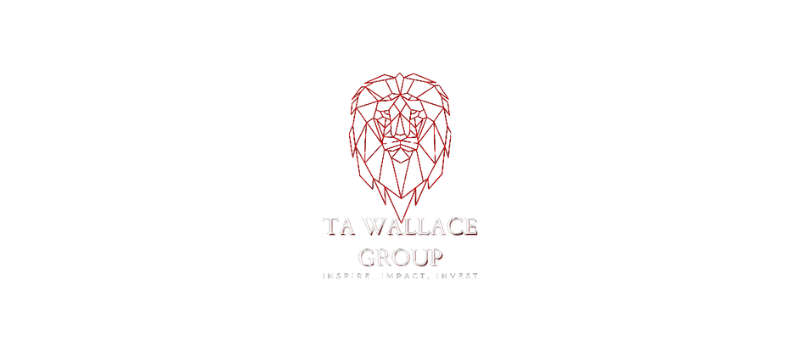7 Powerful Drivers of Engagement That Break Through Hidden Barriers (Ultimate Guide 2025)

Have you ever wondered why some initiatives spark incredible engagement while others fall flat? The secret lies in understanding both the driving forces and hidden barriers that shape human engagement. In this comprehensive guide, we’ll unlock the psychology behind what truly motivates people to engage and examine the often-overlooked obstacles that stand in their way. Understanding the Engagement Ecosystem Engagement isn’t just about catching attention—it’s about creating meaningful connections that inspire action. Recent studies show that organizations with highly engaged stakeholders outperform their peers by 147% in earnings per share. But what exactly drives this remarkable difference? The Foundation: Core Drivers of Engagement Let’s explore the fundamental forces that fuel meaningful engagement: 1. Purpose-Driven Connection People engage more deeply when they feel connected to a larger purpose. Research from Deloitte reveals that purpose-oriented companies experience 40% higher levels of workforce retention and 30% higher levels of innovation. This connection to meaning transforms passive participants into active champions. 2. Psychological Safety When individuals feel safe to express themselves without fear of judgment, engagement flourishes. Google’s Project Aristotle identified psychological safety as the number one factor in high-performing teams. Creating this environment requires consistent effort but yields exponential returns. 3. Autonomy and Empowerment People naturally engage more when they feel in control of their journey. Studies show that employees given higher levels of autonomy report 89% higher job satisfaction and demonstrate 41% lower absenteeism rates. This principle extends beyond the workplace to all forms of engagement. Breaking Down Engagement Barriers Understanding what blocks engagement is just as crucial as knowing what drives it. Here are the primary barriers organizations face: 1. The Complexity Trap When systems or processes become too complicated, engagement suffers. Research indicates that 67% of potential participants disengage when faced with overly complex procedures. The solution lies in thoughtful simplification without losing essential functionality. 2. Information Overload In today’s digital age, information abundance can paradoxically reduce engagement. Studies show that the average person encounters over 10,000 brand messages daily, leading to what psychologists call “attention fatigue.” Breaking through requires strategic communication that respects cognitive limits. 3. Trust Deficit Without trust, engagement is impossible. A recent Edelman study reveals that 81% of consumers need to trust a brand before engaging with it. Building and maintaining trust requires transparency, consistency, and authentic communication. The Engagement Acceleration Framework To maximize engagement while minimizing barriers, consider this integrated approach: Create Emotional Resonance Emotions drive engagement more powerfully than logic. Research from the Harvard Business Review shows that emotionally connected customers are 52% more valuable than those who are merely satisfied. This connection begins with understanding your audience’s deep-seated needs and aspirations. Design for Accessibility Remove friction points that prevent engagement. Organizations that prioritize accessibility in their design see an average 35% increase in engagement rates. This includes both physical and digital accessibility considerations. Foster Community Building Engagement thrives in community settings. Studies indicate that community-based initiatives achieve 66% higher sustained engagement rates compared to isolated approaches. Creating spaces for meaningful interaction amplifies engagement naturally. Measuring Engagement Success To optimize engagement strategies, establish clear metrics: Future Trends in Engagement Looking ahead, several emerging trends will shape engagement strategies: Conclusion Understanding and optimizing engagement requires a holistic approach that addresses both drivers and barriers. By focusing on purpose, safety, and autonomy while actively working to remove complexity, information overload, and trust deficits, organizations can create sustainable engagement that drives meaningful results. Notes Meta Description:Discover the 7 crucial drivers of engagement and learn how to overcome hidden barriers in this comprehensive guide. Unlock the secrets to creating meaningful connections, fostering community, and driving sustainable engagement through proven strategies and emerging trends. Tags: EngagementStrategy #CommunityBuilding #EmployeeEngagement #CustomerExperience #OrganizationalSuccess #DigitalEngagement #PsychologicalSafety #TrustBuilding #Innovation #Leadership Longtail Tags: EngagementDriversAndBarriers2025 SustainableEngagementStrategies EmployeeEngagementOptimization CommunityBuildingBestPractices EngagementMetricsAndMeasurement Strategies to Consider:
The Three M’s of Success: How to Multiply, Maximize, and Magnify Your Impact

Success is often seen as an elusive goal, but what if it could be distilled into three simple principles? The “Three M’s”—Multiply, Maximize, and Magnify—offer a clear, actionable framework for achieving lasting impact in both personal and professional spheres. Whether you’re an entrepreneur building your dream venture, a business leader striving for operational excellence, or someone on a personal growth journey, mastering the Three M’s can help you unlock your full potential. This blog will walk you through the Three M’s of success, explore practical ways to apply each, and share inspiring examples of individuals who have used this framework to transform their lives. Ready to level up? Let’s get started. What Are the Three M’s of Success? At its core, the Three M’s framework is about amplifying your efforts and outcomes. Here’s what each “M” stands for: Each “M” builds upon the other, creating a compounding effect that accelerates your success. Now, let’s discuss how you can apply each principle in your life. How Can You Multiply Your Impact? Multiplying your impact means finding ways to extend your reach and output without necessarily expending more effort. It’s about working smarter, not harder, and utilizing resources that amplify your efforts. 1. Collaborate with Others Collaboration can create exponential results by pooling skills, ideas, and networks. Surround yourself with individuals who complement your strengths and share your vision. Example: Companies like Apple thrive on collaboration between teams. Designers, engineers, and marketers work closely to create seamless products that revolutionize entire industries. 2. Use Social Media and Networking Social media platforms and professional networks provide unprecedented opportunities to connect with like-minded individuals and showcase your brand or ideas to millions of people. Actionable Tip: LinkedIn isn’t just for job hunting—use it to build your professional network by sharing insights, joining discussions, and connecting with thought leaders in your industry. 3. Leverage Technology Advanced tools and automation can significantly reduce manual efforts, allowing you to focus on higher-level tasks. Tools in project management (like Trello or Asana), finance (like QuickBooks), and communication (like Slack) can boost team productivity. Success Strategy: Entrepreneurs like Elon Musk use cutting-edge technology—from AI to automation—to drive innovation and efficiency. 4. Delegate Tasks Recognizing that you can’t do everything alone is critical. Delegating responsibilities to capable team members frees you up to focus on strategic initiatives. Pro Tip: Avoid micromanaging. Delegate tasks with clear expectations and trust your team to deliver results. How Can You Maximize Your Impact? Maximizing is about getting the most out of your resources—be it skills, time, or capital. It’s a principle rooted in intentionality and efficiency. 1. Set Clear Goals and Priorities Clarity creates focus. Set SMART goals (Specific, Measurable, Achievable, Relevant, and Time-bound) to direct your efforts effectively. Example: Business magnate Warren Buffett famously advises focusing on your top five priorities and avoiding all distractions. 2. Continuously Learn and Improve To stay ahead, you must be willing to evolve. Treat learning as a lifelong process and seek growth opportunities. Actionable Step: Set aside 30 minutes daily to read industry blogs, research trends, or take an online course related to your field. 3. Focus on Your Strengths While acknowledging areas for improvement is important, doubling down on your strengths creates unparalleled efficiency and momentum. Expert Insight: Think about how Serena Williams won Grand Slam titles. She didn’t try to be good at everything; she mastered her powerful serve and athleticism. 4. Build Strong Relationships Fostering meaningful professional and personal relationships can lead to invaluable opportunities. Remember, you’re only as strong as your network. Quick Tip: Reach out to a mentor or re-establish a connection with someone who has positively influenced you in the past. A simple but genuine message can go a long way. How Can You Magnify Your Impact? Magnifying your impact takes things to the next level by leaving a lasting imprint on the people and communities around you. It’s about legacy and influence. 1. Be a Leader and Mentor Lead by example and inspire others to take action. Mentorship amplifies your impact by empowering others to carry your knowledge and influence forward. Why It Matters: Oprah Winfrey’s leadership and mentorship in media and philanthropy have created a ripple effect felt across generations. 2. Create a Positive and Inspiring Culture If you’re running a business or leading a team, your workplace culture should encourage creativity, inclusivity, and productivity. Example: Companies like Zappos are widely celebrated for fostering a happy and productive culture that translates into outstanding customer experiences. 3. Give Back to Your Community Whether donating time, money, or resources, actively contributing to your community enhances your impact beyond your personal or organizational goals. Actionable Advice: Set up a scholarship fund, volunteer regularly, or sponsor community events relevant to your mission. 4. Think Long-Term and Sustainable True success isn’t about quick wins; it’s about building something meaningful and enduring. Pro Tip: When creating a product or business, ask yourself how it contributes to a better future. Does it solve a real problem? Will it make a difference years down the line? What Are Some Examples of Successful Individuals Who Have Used the Three M’s? Many influential figures embody the Three M’s: These leaders achieved success not by chance but by strategically multiplying, maximizing, and magnifying their efforts. Take Action Today—Implement the Three M’s Success doesn’t happen overnight, but it becomes achievable when you apply the right strategies. By multiplying your efforts, maximizing your potential, and magnifying your influence, you can create an impact that goes beyond what you thought possible. Now it’s your turn. Take the first step toward implementing the Three M’s today. Ask yourself: Success is within your reach—but only if you act.
Unlock Your Professional Confidence: 7 Strategies That Truly Work

Have you ever walked into a room full of professionals and felt unsure of your worth? Or hesitated to speak up at a meeting, questioning whether your ideas were good enough? You’re not alone. Confidence isn’t always innate—it’s built, brick by brick, with intentional strategies that anyone can use. The good news? You can cultivate steadfast professional confidence that not only elevates your career but enriches how you perceive yourself. This guide will walk you through proven strategies, supported by insights and actionable steps, to build professional confidence that lasts. Whether you’re angling for a leadership role, trying to ace your next big presentation, or simply want to feel more self-assured at work, these confidence-boosting tips will get you there. Why Does Professional Confidence Matter? Before we jump into the strategies, it’s essential to understand why professional confidence is a game-changer. Studies show that 85% of job success comes from having well-developed soft skills like confidence, while only 15% hinges on technical abilities. Confident individuals are more likely to take risks, advocate for their ideas, and build meaningful relationships—qualities that set them apart in any professional setting. Now, let’s explore the actionable steps to become THAT professional—the one who walks into any room, owns it, and thrives. Confidence-Building Strategies That Work 1. Understand Your Value and Strengths If the foundation of confidence is shaky, the structure will eventually crumble. Start with self-awareness by asking yourself, “What unique value do I bring to the table?” Write down your skills, achievements, and character strengths. Action Tip: Reflect on past wins—projects you excelled in, feedback that made you smile, or problems you solved creatively. This isn’t arrogance; it’s about grounding yourself in truth. Keeping a journal of your accomplishments can serve as a quick reminder when self-doubt sneaks in. FAQ Addressed: What if I feel like I don’t have any strengths yet?You do. Your willingness to learn and perseverance count as strengths. Skills can always be built, but recognizing your inner qualities is the first step. 2. Face Challenges Head-On (Start Small) Confidence grows with action. Avoiding challenges may feel safe, but it also limits growth. Instead, step out of your comfort zone in small, manageable ways—like volunteering to share updates in team meetings or connecting with someone new in your industry. Action Tip: Set small, measurable goals. For example, commit to one new task per week that pushes you slightly beyond your usual routine. These incremental wins stack up, boosting both your competence and confidence. FAQ Addressed: What if I fail?Failure is part of the process. View it as feedback, not as an endpoint. Every step forward—no matter how small—brings clarity and builds resilience. 3. Invest in Continuous Learning Knowledge begets confidence. Professionals who actively pursue personal development feel more prepared, regardless of situations thrown their way. Whether it’s learning negotiation tactics, upgrading your technical skills, or reading industry trends, knowledge closes the confidence gap. Action Tip: Dedicate 30 minutes a day to personal development. Podcasts, online courses, or even expert-led webinars can be game-changers. Did You Know? According to LinkedIn Learning’s latest report, 94% of employees said they would stay longer at companies invested in their learning. Not only does this enhance your confidence, but it also makes you an asset. 4. Adopt Power Postures and Positive Visualizations Sometimes confidence comes from the outside-in. Researchers at Harvard highlight how “power poses” such as standing tall with hands on your hips can significantly boost feelings of authority and self-assurance. Combine that with visualizing success—imagine yourself nailing important presentations, exuding charisma at networking events, or negotiating like a pro. Action Tip: Practice a power stance for two minutes before high-stakes situations. Pair it with positive affirmations like “I am fully capable of handling this.” FAQ Addressed: Can posture and visualization alone really help?Yes! Cognitive-behavioral studies show that visualizing success rewires your brain, helping you feel calm and capable in real-life scenarios. 5. Cultivate a Strong Support Network Confidence doesn’t grow in isolation. Surround yourself with mentors, peers, friends, and colleagues who believe in you and challenge you in meaningful ways. The energy you absorb from others shapes your mindset. Action Tip: Actively seek feedback. Constructive feedback, in particular, points you toward growth areas while reaffirming your willingness to improve. Pro Insight: Teams that foster psychological safety—where individuals feel comfortable expressing themselves without fear of ridicule—are 2.6 times more likely to excel, according to a 2021 Google study. This applies individually, too. 6. Conquer Impostor Syndrome Even the most accomplished professionals grapple with impostor syndrome, doubting their own credibility in spite of their achievements. Recognizing this is the first step to beating it. Remind yourself that competence often grows on the job—nobody starts out an expert. Action Tip: Keep an “evidence folder.” Capture emails, certificates, or thank-you notes that highlight your contributions. Reviewing these tangible pieces can counter anxiety about not being “good enough.” FAQ Addressed: How do I stop comparing myself to others?Turn comparison into inspiration. Instead of envying someone’s success, ask yourself, “What can I learn from their story?” 7. Dress the Part It might sound superficial, but appearances matter—both to others and to yourself. Research shows that dressing professionally affects your own perception of competence as much as it does others’. Action Tip: Wear outfits that make you feel powerful during high-stakes situations. Confidence grows when you eliminate distractions like worrying about how you’re being perceived visually. Fun Fact: A Yale study uncovered that people wearing formal business attire negotiated deals more confidently and successfully than casually dressed participants. Additional FAQs About Confidence Building How long does it take to build professional confidence?Confidence-building isn’t linear, and there’s no fixed timeline. However, consistency in applying these strategies leads to noticeable results over time—often within weeks when small goals are set. Can introverts become confident leaders?Absolutely! Confidence isn’t about loudness; it’s about being authentic, prepared, and thoughtful. Introverts have strengths like active listening and empathy, which make them exceptional leaders. Is fake confidence helpful?“Fake it till you make it” has its place.
7 Powerful Steps to Master Your Self-Worth with Confidence Coaching Essentials

Do you ever feel like you’re stuck in a cycle of self-doubt, constantly questioning your value? You’re not alone. Struggling with self-worth and confidence is more common than you think—but the good news is that it’s entirely possible to break free from this mindset. Confidence coaching offers proven tools and strategies to help you rewrite your inner narrative and take control of how you view yourself. But where do you start? Right here. This guide will walk you through confidence coaching essentials—actionable tips, expert insights, and strategies designed to help you strengthen your self-worth and show up as the best version of yourself. What Is Confidence Coaching, and Why Does It Work? Before we explore the essentials, let’s clear up what confidence coaching actually is. Confidence coaching helps individuals identify and overcome blocks to self-esteem and self-worth. It supports personal growth, empowering you to create a more confident and fulfilled life. By combining practical tools, insightful questions, and mindset strategies, confidence coaching helps you change limiting beliefs, develop self-awareness, and step into your full potential. According to a study by the University of Melbourne, individuals with higher self-confidence are more likely to succeed in their personal and professional lives. This isn’t just about feeling good—it’s about making meaningful improvements across every aspect of your life. Now let’s get practical. Confidence Coaching Essentials You Need to Know 1. Understand Where Your Self-Worth Stems From It all starts with understanding. Your self-worth isn’t determined by external factors like job titles, social media likes, or others’ approval. True self-worth lives inside you—it’s how you value yourself at your core, regardless of outside circumstances. Take a moment to reflect. Ask yourself questions like: Pro tip: Journaling these thoughts is a powerful way to uncover patterns and reflect on your triggers. Confidence coaching often begins with unraveling these stories to pave the way for a mindset shift. 2. Identify and Challenge Negative Self-Talk Negative self-talk is like a toxic friend—it holds you back, drains your energy, and keeps you doubting yourself. Confidence coaching emphasizes recognizing and reprogramming these harmful narratives. Try this: Building this habit takes practice, but it’s one of the most empowering changes you can make. 3. Set Achievable Confidence Goals Building confidence is a journey, and it’s fueled by small wins. Instead of setting overwhelming goals, break them into achievable steps. For instance: These small, consistent actions build momentum and reinforce a sense of competence and capability. 4. Adopt a “Growth Mindset” A study by Stanford psychologist Dr. Carol Dweck shows that people with growth mindsets (believing abilities can be developed through effort) are more resilient and successful. Confidence coaches frequently teach this mindset to strengthen self-worth. Instead of thinking, “I failed, so I must be bad at this,” reframe it to, “I didn’t succeed yet, but I’m learning and improving.” The key word? “Yet.” It turns failure into a stepping stone instead of a dead end. 5. Cultivate Self-Compassion It’s easy to be your hardest critic. But self-worth blooms when you treat yourself with the same kindness and understanding you’d offer a friend. When setbacks happen, tell yourself:“I did my best, and that’s enough. Everyone makes mistakes—it’s part of growth.” Research by Dr. Kristin Neff on self-compassion highlights how this practice can reduce anxiety and increase resilience. The takeaway? Talk to yourself kindly. 6. Celebrate Growth Instead of Perfection Perfectionism can suffocate your confidence. Why? It sets unattainable standards, leaving you endlessly disappointed. Shift your focus to progress instead. Maybe you’re not a master at public speaking yet, but you volunteered to lead part of the conversation in yesterday’s meeting. That’s growth. Celebrate it. Remember, confidence is built in these deliberate leaps forward, no matter how small they seem. 7. Take Aligned Actions Consistently Confidence grows when actions match intentions. If you value honesty, start expressing yourself authentically. If you aspire to be confident in social settings, begin attending events that push you slightly out of your comfort zone. The more aligned you are with your values, the stronger your inner self-worth becomes. Frequently Asked Questions About Confidence Coaching 1. How long does it take to see results with confidence coaching?The timeline varies, but many start noticing a shift within weeks of consistent effort. Long-term change often occurs over several months of practice and self-reflection. 2. Do I need a professional coach, or can I do this on my own?While a coach provides personalized guidance and accountability, you can begin building confidence independently using books, online resources, and structured self-reflection. 3. Can anyone improve their self-worth, or is it innate?Self-worth isn’t fixed. With the right tools and mindset, anyone can cultivate and strengthen their sense of value. 4. What are the benefits of higher self-worth?Improved relationships, increased resilience, greater success in work and personal goals, and a richer sense of fulfillment—the list goes on. 5. What’s the first step I should take?Start by increasing your self-awareness. Notice how you speak to yourself and focus on one area where you’d like to grow. From there, explore confidence-building practices like setting small, measurable goals. Final Thoughts Mastering your self-worth through confidence coaching isn’t about flipping a switch—it’s about taking deliberate and empowering steps toward believing in yourself. By challenging old patterns, setting meaningful goals, and consistently showing up for yourself, you’ll unlock a newfound sense of assurance and ability to tackle life’s challenges. Remember, confidence isn’t something you’re born with—it’s something you build. And the good news? You have everything it takes to get there, starting today.

